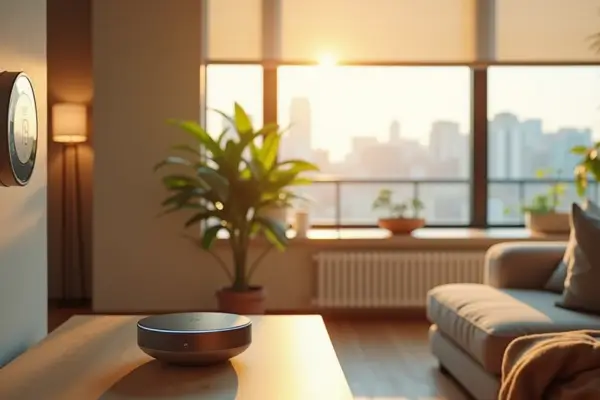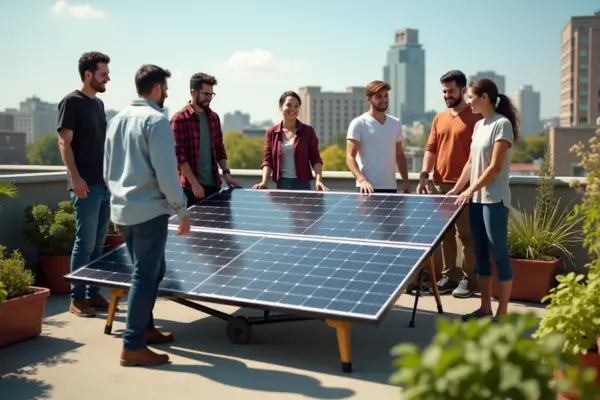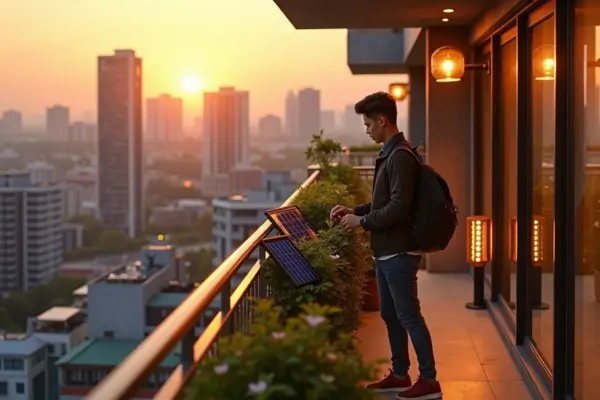As cities grow denser and environmental concerns become more pressing, sustainable living is no longer just a trend—it’s a necessity. Urban dwellers, especially those in apartments, face unique challenges when trying to reduce their environmental impact. Limited space, rental restrictions, and shared infrastructure can make eco-friendly upgrades seem difficult. However, smart home technology offers an accessible and efficient way for apartment residents to live more sustainably without major renovations.
Smart home devices are designed to optimize energy use, reduce waste, and improve efficiency—all while fitting seamlessly into compact urban living spaces. From automated lighting that cuts electricity bills to smart thermostats that learn your habits for better climate control, these innovations make it easier than ever to shrink your carbon footprint. Even renters can benefit from plug-and-play gadgets that require no permanent installation.
In this article, we’ll explore the best smart home technologies for sustainable apartment living, including:
- Energy-efficient lighting to reduce unnecessary power consumption.
- Smart thermostats that adjust heating and cooling for maximum efficiency.
- Water-saving devices to prevent waste and lower utility bills.
- Smart plugs and energy monitors to track and minimize electricity use.
- Eco-friendly security and waste management solutions for a greener home.
By integrating these technologies, apartment dwellers can contribute to a healthier planet while enjoying cost savings and modern convenience. Let’s dive into how smart home tech can transform your living space into an eco-conscious haven.
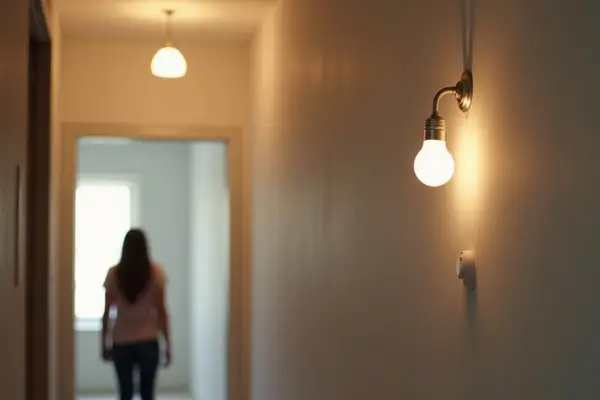
Energy-Efficient Smart Lighting
One of the easiest ways to make your apartment more sustainable is by upgrading to smart lighting. Traditional incandescent bulbs waste energy and generate excess heat, but LED smart bulbs—like those from Philips Hue and LIFX—use up to 80% less energy while lasting years longer. These bulbs offer more than just efficiency; they provide customizable brightness, color temperatures, and even mood lighting, all controllable from your smartphone.
Motion Sensors & Automated Lighting
Why leave lights on when no one’s in the room? Smart motion sensors (such as those from Lutron or Philips Hue) detect movement and automatically turn lights on or off, eliminating wasted energy. This is especially useful in entryways, closets, or bathrooms—places where lights are often accidentally left running.
Scheduling & Voice Control for Efficiency
Take automation further by scheduling lights to match your routine. Smart bulbs can:
- Turn on at sunset and off at bedtime.
- Simulate occupancy when you’re away (enhancing security while saving energy).
- Sync with sunrise for a natural wake-up light.
Pair them with voice assistants (Alexa, Google Assistant, or Siri) for hands-free control—just say, “Turn off all lights” before leaving, ensuring no energy is wasted unnecessarily.
The Bottom Line
Smart lighting isn’t just convenient—it’s a simple, cost-effective way to cut energy use in apartments. By combining LED efficiency, motion sensors, and smart scheduling, renters and owners alike can reduce their carbon footprint without sacrificing comfort.
Next up: How smart thermostats optimize heating and cooling for sustainability.
Smart Thermostats for Climate Control
Heating and cooling account for nearly 50% of an average home’s energy use—and apartments are no exception. Traditional thermostats waste energy by running unnecessarily, but smart thermostats like Nest and Ecobee use AI and automation to optimize temperature control, reducing both bills and environmental impact.
How Smart Thermostats Optimize Heating & Cooling
These devices learn your habits and adjust settings automatically:
- Adaptive Learning – Tracks when you’re home, asleep, or away to adjust temps efficiently.
- Geofencing – Uses your phone’s location to turn HVAC on/off as you come and go.
- Weather Adaptation – Adjusts heating/cooling based on local forecasts to prevent overuse.
For renters, many smart thermostats (like the Ecobee SmartThermostat) are easy to install and removable, requiring no permanent changes.
Remote Control via Smartphone
Forgot to turn off the AC before leaving? No problem. With remote smartphone control, you can:
- Adjust temps from anywhere.
- Set schedules for different times of day.
- Monitor energy usage in real time.
Energy Savings & Reduced Carbon Footprint
Studies show smart thermostats can cut HVAC energy use by 10-15%, leading to:
- Lower utility bills – Some users save $100+ annually.
- Fewer emissions – Reduced energy demand means less strain on power grids.
- Eco-friendly certifications – Many qualify for energy rebates.
The Bottom Line
A smart thermostat is one of the most impactful upgrades for sustainable apartment living—balancing comfort, convenience, and conservation effortlessly.
Next up: How smart water-saving devices prevent waste in small spaces.
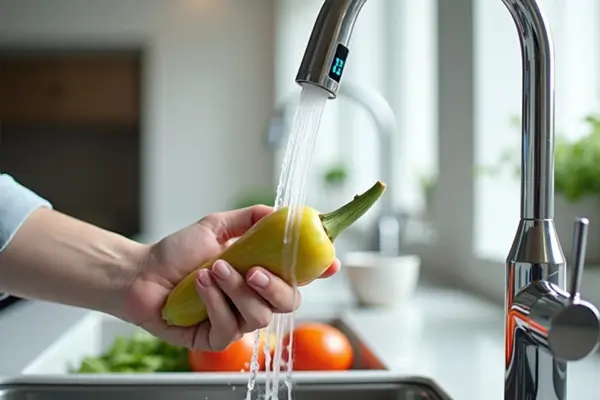
Water-Saving Smart Devices for Sustainable Apartments
Water scarcity affects millions worldwide, and urban apartments often contribute to unnecessary water waste through inefficient fixtures and undetected leaks. Fortunately, smart water technologies help renters and homeowners conserve this precious resource effortlessly—while also lowering utility bills.
Smart Faucets & Showerheads: Precision Water Control
Traditional fixtures flow at 2.5+ gallons per minute (GPM), but smart faucets (Moen Smart Faucet) and showerheads (Hydrao) optimize usage by:
- Touchless operation – Motion sensors activate water only when needed (great for kitchens/bathrooms).
- Flow rate monitoring – Displays real-time usage via smartphone app to encourage conservation.
- Temperature memory – Reduces water wasted waiting for hot water.
Bonus: Many models are rental-friendly, requiring no complex plumbing changes.
Leak Detection Sensors: Preventing Costly Waste
A single dripping faucet can waste 3,000+ gallons yearly—but smart leak detectors (like Phyn or Flo by Moen) help by:
- 24/7 monitoring – Alerts you to leaks via app notifications before major damage occurs.
- Automatic shutoff – Some models can stop water flow in emergencies.
- Usage analytics – Tracks daily consumption patterns to spot inefficiencies.
Ideal for: Apartments with limited maintenance access where leaks go unnoticed.
Greywater Recycling: An Emerging Solution
While most apartments can’t install full greywater systems, compact options are emerging:
- Portable greywater diverters – Redirect shower water to toilet tanks (where building codes allow).
- Smart irrigation systems – For balcony gardens, reuse collected AC condensation or lightly used water.
Note: Check local regulations before implementing greywater solutions.
Why It Matters
- The EPA estimates 10% of homes waste 90+ gallons daily from leaks alone.
- Smart water devices can help apartments cut usage by 20-30% with minimal effort.
- Conservation reduces strain on municipal systems—critical in drought-prone areas.
Next Up: How smart plugs & energy monitors eliminate phantom power drain in apartments.
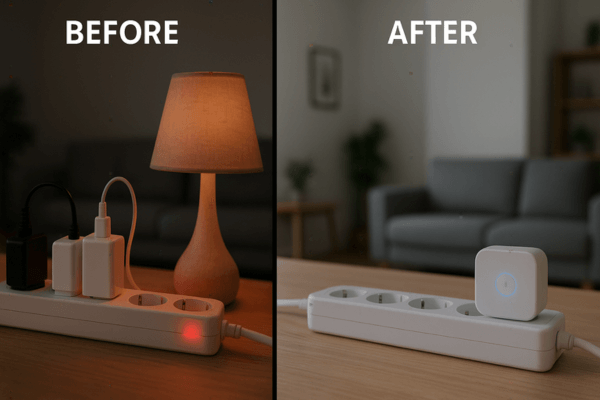
Smart Plugs & Energy Monitoring: Cutting Invisible Waste
Did you know your electronics keep sucking power even when “off”? This phantom energy drain accounts for 5-10% of household electricity use—adding unnecessary costs and carbon emissions. For apartment dwellers, smart plugs and energy monitors offer an instant solution without wiring or landlord approval.
Slaying Vampire Power with Smart Plugs
Devices like TP-Link Kasa, Wemo Mini, and Eve Energy act as remote-controlled switches that:
- Completely cut power to idle devices (entertainment systems, coffee makers, chargers)
- Work with voice assistants (“Alexa, turn off the work desk”)
- Feature energy monitoring to identify worst phantom-load offenders
Pro Tip: Use smart plugs on media centers—the average TV setup wastes $100+/year in standby power
Real-Time Energy Tracking = Smarter Habits
Advanced models like Emporia Vue (for breaker panels) or plug-in Sense Energy Monitor reveal:
- Which devices spike your usage (that old fridge could cost you $200+/year)
- Real-time cost calculations (watching your AC drain $0.50/hour motivates changes)
- Comparisons to energy-efficient alternatives
Automating for Off-Peak Savings
Utility companies charge less during low-demand periods. Smart plugs can:
- Run dishwashers/washers automatically at 3 AM (when energy is cleaner/cheaper)
- Preheat your apartment before peak-rate hours begin
- Sync with solar battery systems if you have balcony panels
Case Study: A Chicago apartment saved 12% on bills just by shifting laundry schedules
Why Renters Should Care
- No installation needed – Just plug into existing outlets
- Portable savings – Take them when you move
- Immediate ROI – Most pay for themselves in <6 months
Next Up: How eco-conscious smart security protects both your home and the planet.
Sustainable Smart Home Security: Green Protection for Modern Apartments
Solar-Powered Surveillance: Always On Without Draining Resources
Today’s solar-powered security cameras like Ring Solar Cam and Arlo Pro 4 offer apartment dwellers:
- True energy independence: Built-in solar panels provide continuous operation without wiring or battery waste
- Flexible installation options: Magnetic mounts work on railings or window frames (no drilling required)
- Eco-conscious materials: Many models now use recycled plastics and reduced packaging
- Smart energy storage: Some systems prioritize solar charging while grid-tied models can feed excess energy back
Pro Tip: Position cameras where they get 4+ hours of direct sunlight – south-facing windows work great for apartments
Next-Gen Smart Locks: Keyless & Sustainable Entry
Modern smart locks solve two problems at once – security and waste:
- August Wi-Fi Smart Lock (4th Gen):
- Uses 50% less power than previous models
- Retrofit design preserves existing hardware
- Auto-lock feature prevents energy-wasting open-door HVAC loss
- Yale Assure Lock 2:
- Solar-ready with optional add-on panel
- Touchscreen eliminates disposable batteries
- Modular design allows component upgrades vs full replacement
The Digital Key Revolution
Ditching physical keys provides surprising sustainability benefits:
- No more:
- Metal key production (energy-intensive machining)
- Plastic keycards (200+ million end up in landfills annually)
- Lock rekeying waste when keys are lost
- New advantages:
- Temporary access codes for guests/service providers
- Biometric options (fingerprint/facial recognition)
- Integration with building-wide systems in newer complexes
Creating a Full-Circle Sustainable Security System
For maximum eco-impact:
- Pair solar cameras with local storage (reduce cloud energy use)
- Choose repairable devices (like Eufy’s modular systems)
- Opt for security brands with recycling programs (Ring offers free device recycling)
- Use motion-activated lighting to complement cameras (reduces all-night operation)
Did You Know? A single solar-powered security camera can prevent 24+ disposable battery changes over its lifespan
Next Up: Discover how smart waste tech can help your apartment achieve near-zero waste status with minimal effort
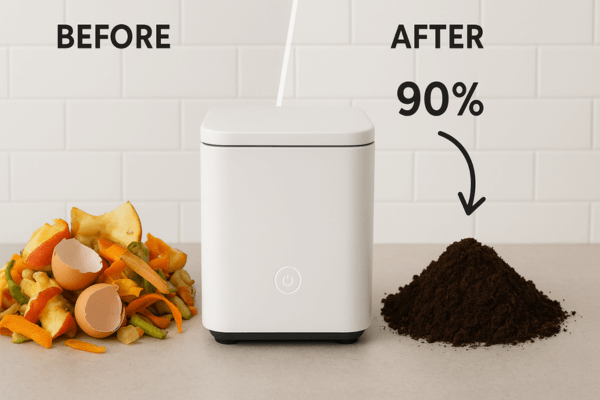
Smart Waste Management: The Zero-Waste Apartment Revolution
Living sustainably in an apartment isn’t just about energy—it’s about rethinking waste. Smart waste tech helps urban dwellers compost, recycle, and shop smarter, even in small spaces.
1. Smart Composting for Small Spaces
Problem: Traditional composting is messy and impractical for apartments.
Solution: Compact, odor-free composters like:
✔ Lomi – Turns food scraps into fertilizer in 3-5 hours (great for balconies)
✔ FoodCycler – Reduces waste volume by 90%, no smells, minimal electricity
✔ Vitamill – Grinds and dehydrates scraps into nutrient-rich soil boosters
Why It Matters:
- 30% of landfill waste is food scraps, emitting methane
- Smart composters let renters recycle organics without outdoor space
2. AI-Powered Recycling Assistants
Problem: Recycling mistakes contaminate entire batches.
Solution: Smart bins that sort waste automatically:
✔ TrashBot – Uses AI to identify and separate recyclables
✔ TetraBIN – Gamifies recycling with interactive displays
✔ GeniCan – Scans barcodes and creates shopping lists from discarded packaging
Bonus: Some models offer real-time recycling feedback via app, helping users improve habits.
3. Smart Grocery Tracking to Cut Food Waste
Problem: 40% of food in the U.S. goes uneaten—often because we forget what’s in our fridge.
Smart Solutions:
✔ Samsung Family Hub Fridge – Tracks expiration dates and suggests recipes
✔ Metered Smart Containers – Weigh food and alert you before it spoils
✔ Too Good To Go App – Connects users with discounted surplus food from local stores
Pro Tip: Pair smart grocery lists (like Google Keep or AnyList) with inventory trackers to buy only what you need.
Why Smart Waste Tech Works for Apartments
✅ Space-efficient – No need for bulky bins or backyard compost piles
✅ Landlord-friendly – Most devices are plug-and-play, no renovations needed
✅ Cost-saving – Reduces trash fees and grocery bills over time
Next Up: How community solar and portable renewables can power apartments sustainably
Renewable Energy for Apartments: Solar Power Without the Roof
Just because you rent doesn’t mean you can’t harness clean energy. New portable solar tech and shared energy programs are making renewables possible for apartment dwellers. Here’s how to power your space sustainably—no rooftop access required.
1. Balcony & Window Solar: Plug-and-Play Power
Finally: Solar designed for renters!
✔ Balcony Solar Panels (e.g., Bluetti PV200, Renogy Eclipse)
- 100-300W systems that hook to railings
- Plug directly into outlets (in some regions)
- Power lamps, laptops, or small appliances
✔ Window Solar Panels (e.g., Solargaps)
- Transparent films that generate power while maintaining views
- Peel-and-stick installation (no damage to glass)
✔ Solar Generators (e.g., Jackery, EcoFlow)
- Store energy for blackouts or nighttime use
- Great for charging devices off-grid
Pro Tip: In the EU, some countries require landlords to allow balcony solar!
2. Community Solar: The Renter’s Power Plant
How it works: Subscribe to a local solar farm and get credits on your utility bill.
✔ No upfront costs – Just pay for the clean energy you use
✔ Available in 40+ U.S. states (e.g., Arcadia, Nexamp)
✔ Save 5-15% on electricity bills in most cases
Best Part: You can take your subscription with you when you move!
3. Compact Battery Storage for Apartments
Store clean energy without a Powerwall:
✔ Tesla Compact – Slim, wall-mounted battery for daily cycling
✔ LG RESU – Fits in closets or utility spaces
✔ Solar-Integrated Systems – Like EcoFlow Power Kits for balconies
Bonus: Pair with a smart plug to automatically use stored energy during peak rate hours.
Why This Matters for Renters
✅ Lower bills – Solar + storage cuts reliance on grid power
✅ Emergency backup – Keep essentials running during outages
✅ Future-proof – Take portable systems when you move
Coming Next: How to convince your landlord to support green upgrades
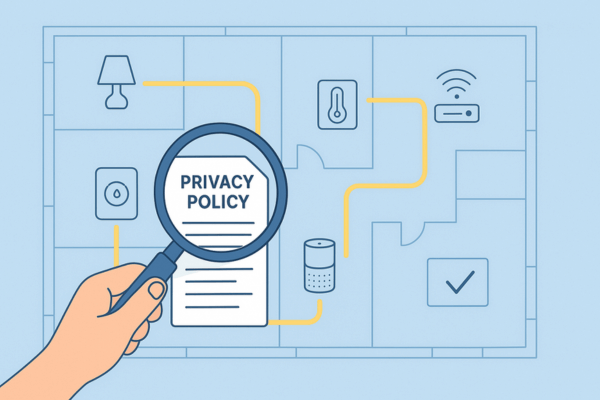
Challenges and Considerations for Sustainable Smart Apartments
While smart home tech offers incredible sustainability benefits, renters and owners should weigh these key factors before diving in. Here’s how to navigate the hurdles—without compromising on eco-friendly living.
1. Upfront Costs vs. Long-Term Savings
The Reality: Many smart devices require an initial investment, but the payoff can be substantial.
Cost Breakdown & ROI
| Device | Avg. Cost | Annual Savings | Payback Period |
| Smart Thermostat | $150-$250 | $100-$180 | 1-2 years |
| Smart Plugs | $15-$40 | $30-$80 | <1 year |
| Solar Balcony Panel | $300-$600 | $100-$200 | 3-5 years |
Ways to Offset Costs:
✔ Look for energy rebates (many utilities offer discounts)
✔ Start with low-cost essentials (smart plugs, water sensors)
✔ Buy refurbished or secondhand (e.g., Amazon Renewed)
2. Rental Restrictions: Working Around Lease Limitations
Common Landlord Concerns:
- “No permanent modifications” → Use peel-and-stick sensors, plug-in devices
- “Wi-Fi device limits” → Choose Zigbee or Thread-based gadgets (less network strain)
- “Who pays for upgrades?” → Propose a cost-sharing model (you buy, landlord keeps post-lease)
Pro Tip: Frame sustainability upgrades as value-adds (e.g., “This smart lock reduces building liability from lost keys”).
3. Privacy & Data Security in Smart Homes
IoT devices can expose personal data—here’s how to stay safe:
Biggest Risks & Fixes
| Risk | Solution |
| Unencrypted data leaks | Choose Matter/Thread-certified devices |
| Camera hacking | Enable 2FA, regular firmware updates |
| Energy usage tracking | Opt for local processing (e.g., Home Assistant) |
Best Practices:
✔ Create a separate IoT Wi-Fi network
✔ Regularly audit device permissions
✔ Avoid cheap no-name brands with weak security
Making It Work for You
✅ Prioritize plug-and-play devices if you rent
✅ Calculate ROI before big purchases
✅ Secure your network before adding smart tech
Next Up: Final takeaways—how to start small and scale your sustainable smart apartment!
Conclusion:
Building a Greener Future—One Smart Apartment at a Time
Sustainable living in apartments isn’t just possible—it’s easier than ever thanks to smart home technology. From energy-efficient lighting to solar-powered security and AI-assisted waste sorting, these innovations prove that renters don’t need to own property to make a meaningful environmental impact.
Start Small, Think Big
You don’t need a full smart home overhaul to begin. Try:
🔹 A single smart plug to eliminate phantom energy drain
🔹 A water-saving showerhead that pays for itself in months
🔹 A portable solar charger to dip into renewable energy
These small steps add up—both for your wallet and the planet.
The Future of Sustainable Smart Living
Emerging tech will make eco-friendly apartments even smarter:
🌱 Self-powered sensors (kinetic or solar) that never need batteries
🌱 AI energy brokers that automatically buy/sell renewable energy for you
🌱 Modular appliances designed for easy repair and upgrades
Your Next Step
Pick one device from this guide that fits your budget and lifestyle. Sustainability isn’t about perfection—it’s about progress.
Now Over to You:
What’s the first smart eco-upgrade you’re excited to try? Share your plans in the comments!

